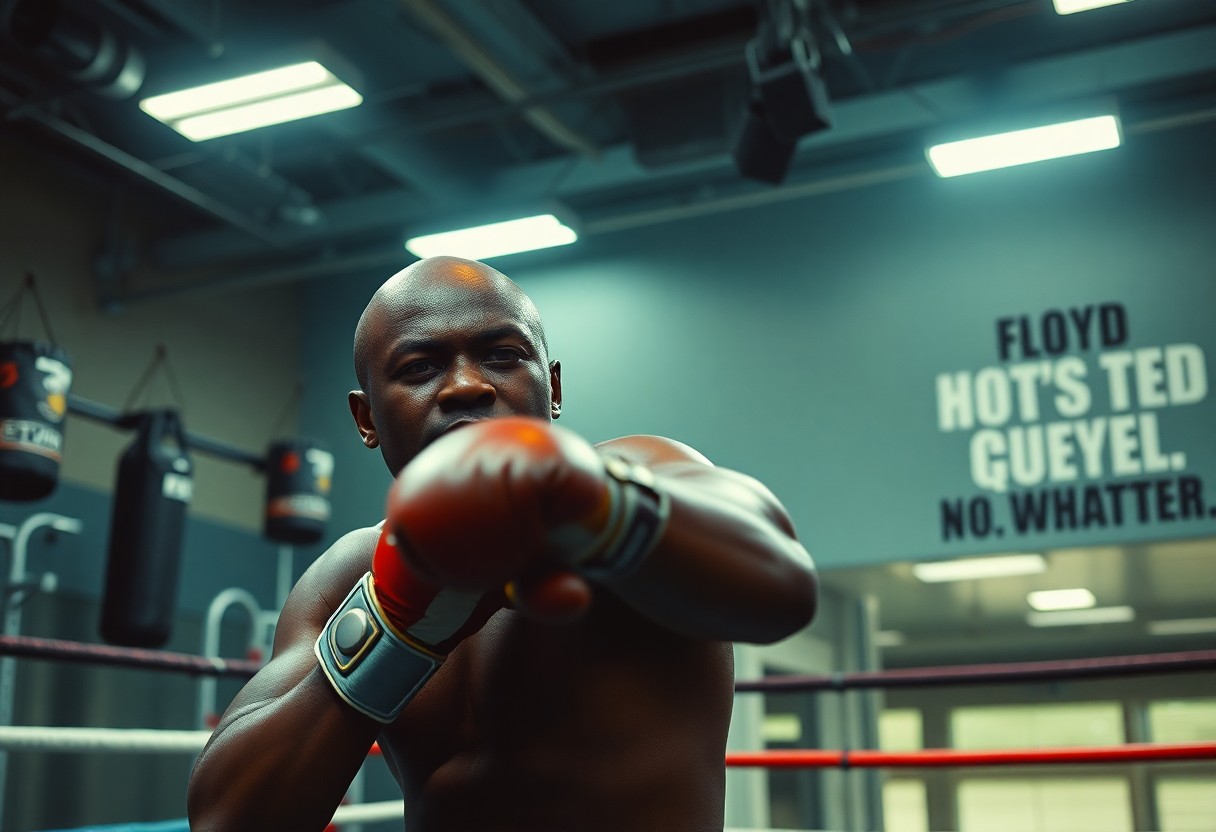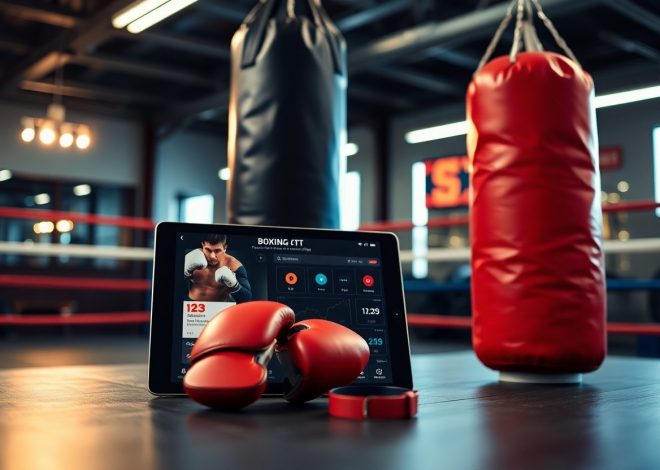
Floyd Mayweather’s Fitness Regimen: Timeless Lessons In Training And Endurance
There’s a wealth of knowledge to gain from Floyd Mayweather’s unparalleled approach to fitness and endurance. His regimen combines intense cardio, targeted strength training, and mental discipline, offering lasting lessons for anyone seeking to enhance their physical performance. Emphasizing the importance of consistency and dedication, Mayweather’s methods transcend boxing, providing a blueprint for achieving peak fitness levels. By understanding his strategies, you can cultivate your own resilience and establish a sustainable training routine that pushes your limits.
Types of Fitness Regimens
Floyd Mayweather’s approach to fitness encompasses various regimens tailored to enhance performance, stamina, and resilience. Each routine plays a pivotal role in building an all-rounded athlete, ensuring that physical demands are met with precision and stamina. These include aerobic conditioning, strength training, and flexibility and recovery methods.
- Aerobic Conditioning
- Strength Training
- Flexibility and Recovery
- High-intensity Interval Training
- Nutrition and Hydration
Assume that each component is crucial for an athlete’s optimal performance.
Aerobic Conditioning
Aerobic conditioning focuses on enhancing cardiovascular endurance through sustained activities that elevate the heart rate. Mayweather incorporates extensive running, jump rope, and shadowboxing in his regimen. This builds stamina vital for long bouts, allowing him to maintain energy and focus.
Strength Training
Strength training in Mayweather’s regimen is designed to develop explosive power and enhance muscle endurance. He utilizes bodyweight exercises alongside weights, including heavy bag work and resistance training, to build a strong, agile physique.
Mayweather emphasizes compound movements for strength training, integrating exercises such as squats, deadlifts, and bench presses to engage multiple muscle groups. His training often involves multi-rep sets, fostering not only strength but also muscular endurance, which is vital during extended fights, helping him absorb and deliver punishing blows effectively.
Flexibility and Recovery
Flexibility and recovery are key to preventing injuries and ensuring longevity in any rigorous fitness program. Mayweather implements dynamic stretching, yoga, and foam rolling as vital elements of his recovery process. This focus on mobility allows for enhanced performance in the ring.
Moreover, emphasizing recovery through adequate rest, sports massages, and yoga significantly aids in muscle repair and helps maintain peak physical condition. Proper recovery routines enable Mayweather to train intensely while minimizing the risk of injuries, allowing him to stay consistently at the top of his game.
Key Factors Influencing Endurance
Several elements play a significant role in developing endurance, affecting an athlete’s ability to perform consistently. Key factors include:
- Nutrition
- Hydration
- Sleep
- Recovery
- Mental Preparation
Assume that understanding these elements can elevate athletic performance exponentially.
Nutrition and Hydration
Proper nutrition and hydration are foundational for sustaining energy levels and enhancing endurance. Mayweather prioritizes a diet rich in lean proteins, complex carbohydrates, and healthy fats while staying hydrated to prevent fatigue and promote optimal performance.
Sleep and Recovery
Optimizing sleep and implementing effective recovery strategies are vital for muscle repair and overall performance. Mayweather adheres to a structured sleep schedule, ensuring his body rejuvenates and is prepared for rigorous training sessions.
Prioritizing sleep is vital for maintaining high endurance levels. Some athletes aim for at least 7-9 hours of quality sleep each night to combat fatigue and enhance athletic performance. Coupled with active recovery techniques like stretching, foam rolling, and low-intensity workouts, Floyd emphasizes the importance of not just sleep quantity but quality to restore energy and reduce injury risk.
Mental Preparation
Mental preparation is a key component of Floyd Mayweather’s training. He employs visualization techniques and positive affirmations to bolster confidence and focus during high-stakes competitions.
This mental fortitude fosters resilience, enabling Mayweather to persevere through physical and psychological challenges. By practicing mindfulness and maintaining a strong mental game, he positions himself advantageously against opponents, contributing significantly to his sustained success and endurance in the ring.
Effective Training Tips
- Stay disciplined by maintaining a regular workout schedule.
- Focus on strength training to build endurance and power.
- Incorporate variety to prevent boredom and plateaus.
- Track progress to stay motivated and adjust routines.
Perceiving these tips as foundational can significantly enhance your training effectiveness.
Consistency in Training
Sticking to a consistent training schedule ensures steady improvement and reinforces muscle memory. Floyd Mayweather exemplifies this through his rigorous daily routine, emphasizing the importance of discipline. Regular workouts not only build physical strength but also foster mental resilience.
Setting Realistic Goals
Effective training hinges on setting achievable objectives that align with personal fitness levels. Floyd Mayweather’s career highlights the importance of working towards incremental goals, avoiding the pitfalls of overambition. Establishing short-term milestones can maintain motivation and create a sense of accomplishment.
Setting realistic goals cultivates a sustainable training process. Aiming too high can lead to frustration, while attainable targets promote consistency. For example, a boxer may focus on improving jab execution for a month before moving on to footwork. This approach makes the journey manageable and keeps one motivated. Furthermore, assessing progress with each goal reinforces confidence, necessary for long-term success in any fitness journey.
Importance of Cross-Training
Cross-training enhances overall fitness by integrating diverse exercises that improve various muscle groups. Mayweather’s regimen often includes running, swimming, and weightlifting to maintain peak performance. This variety not only boosts endurance but also reduces the risk of injury associated with repetitive strain.
Cross-training offers comprehensive benefits for athletes. By diversifying workouts, one can improve flexibility, strength, and cardiovascular health simultaneously. Engaging in different activities helps prevent burnout while ensuring overall body conditioning. For instance, incorporating yoga can enhance flexibility, significantly benefiting a boxer’s range of motion. This holistic approach to training can lead to better performance in primary sports.
Step-by-Step Guide to Building Endurance
| Step | Description |
| Establishing a Baseline | Assess your current fitness level to create an effective endurance training plan. |
| Gradual Increase of Intensity | Slowly intensify workouts to prevent injury and ensure progressive improvement. |
| Incorporating Rest Days | Allow recovery time to enhance performance and avoid burnout. |
Establishing a Baseline
Determine your fitness starting point by performing a series of tests, such as a timed mile run or cycling for a set distance. Tracking metrics like heart rate and exertion levels will provide insight into your current endurance capacity, enabling tailored adjustments to your training plan.
Gradual Increase of Intensity
To build endurance effectively, it’s necessary to slowly increase the intensity of workouts. This approach helps the body adapt and strengthens cardiovascular systems, allowing for sustained performance over time.
Begin with a manageable workout duration and intensity. Increase duration by 10% weekly, and incorporate interval training to enhance cardiovascular fitness. For instance, alternating high-intensity bursts of 30 seconds with moderate activity can elevate overall endurance while minimizing injury risk.
Incorporating Rest Days
Integrating rest days into your schedule ensures adequate recovery. These breaks are necessary for muscle repair and rebuilding, which contribute to improved performance and longevity in training.
Concisely, schedule at least one to two rest days each week. Active recovery activities, such as gentle yoga or light walking, can maintain blood flow without overexerting your muscles. This balance helps avoid fatigue and supports sustained progress in your endurance journey.
Pros and Cons of Mayweather’s Training Style
| Pros | Cons |
|---|---|
| Peak physical conditioning | High risk of injury |
| Enhanced endurance | Time-intensive |
| Technical precision | Potential for overtraining |
| Strong mental discipline | May not suit all body types |
| Improved speed and agility | Can be monotonous |
| Versatile training methods | Access to expensive equipment |
| Focus on nutrition | Requires substantial commitment |
| Personalized programs | Limited recovery time |
| Team support and guidance | Requires continuous motivation |
| High performance standards | Intense mental pressure |
Advantages of Rigorous Training
The foundation of Mayweather’s success lies in his rigorous training regimen which promotes superior physical conditioning and enhanced endurance. His workouts emphasize technical precision, helping him develop skills that allow him to execute complex boxing maneuvers effortlessly. With a routine that includes cardiovascular exercises, strength training, and technical drills, athletes can achieve exceptional levels of speed and agility, important for competition. This comprehensive approach fosters not only physical prowess but also instills a strong sense of mental discipline.
Potential Drawbacks to Consider
While Mayweather’s training style delivers impressive results, it’s not without its downsides. The intensity required can lead to a high risk of injury, particularly for those who lack experience or proper supervision. Additionally, the commitment needed for such an intensive regime can be overwhelming and may not fit into everyone’s lifestyle.
Moreover, the potential for overtraining is significant, as excessive workouts without adequate recovery can negatively impact performance and overall health. Individuals may experience both physical fatigue and mental burnout, questioning their dedication and progress. Customizing the training to individual needs becomes important to mitigate these drawbacks. Furthermore, the high costs associated with personal trainers, specialized equipment, and nutritional programs can be prohibitive for many. Adapting Mayweather’s approach while considering personal limitations ensures a balanced pursuit of fitness goals.
Frequently Asked Questions
This section addresses common inquiries related to Floyd Mayweather’s fitness regimen, particularly focusing on practical advice for those looking to adopt similar strategies in their training and endurance routines.
How to Get Started?
Begin by assessing your current fitness level and identifying your goals. Gradually incorporate high-intensity intervals, cardio, and strength training into your routine. Commit to a structured schedule, enhancing consistency and dedication. Start with shorter sessions and progressively increase intensity and duration for optimal results.
What Equipment is Needed?
A minimal set of equipment can significantly enhance your training. Essential items include a jump rope for agility and conditioning, dumbbells for strength training, resistance bands for flexibility, and a heavy bag for boxing practice. A quality gym mat for workouts adds comfort and safety.
Specific equipment like a heavy bag allows for effective striking practice, enhancing technique and power. A jump rope is vital for improving cardiovascular fitness and coordination, while dumbbells can diversify strength training routines to target various muscle groups. Resistance bands are compact, versatile, and perfect for strength and rehab exercises, contributing to joint stability and mobility without the risk of heavy weights. A well-structured combination of these tools can mimic the intensity and versatility of Mayweather’s training regimen.
Summing up
Now, Floyd Mayweather’s fitness regimen exemplifies that dedication, consistency, and a tailored approach to training can yield impressive endurance and performance results. By emphasizing discipline in workouts, nutrition, and recovery, athletes can draw timeless lessons from Mayweather’s methods that apply across various disciplines. His relentless pursuit of excellence not only inspires but also provides a framework for achieving peak physical condition and mental resilience, illustrating that success in fitness is as much about mindset as it is about mechanics.
FAQ
Q: What key components make up Floyd Mayweather’s fitness regimen?
A: Floyd Mayweather’s fitness regimen includes a mix of intense cardio, strength training, and skill work. He emphasizes high-intensity interval training (HIIT) for conditioning, weight training for muscle endurance, and extensive boxing drills to refine technique. Nutrition and recovery practices, including stretching and rest, are also integral parts of his approach.
Q: How does Mayweather balance training with recovery?
A: Mayweather prioritizes recovery through scheduled rest days and active recovery techniques, such as light workouts and stretching. He uses ice baths and massage therapy to alleviate soreness and enhance recovery. His attention to sleep and nutrition plays a vital role in maintaining peak performance and preventing injuries.
Q: What mindset does Mayweather promote regarding training and endurance?
A: Mayweather emphasizes the importance of discipline, consistency, and mental toughness in training. He believes that a strong mindset is key to pushing through challenges and maintaining focus on goals. This philosophy encourages individuals to remain dedicated to their fitness journeys, reinforcing that effort and perseverance yield success.

